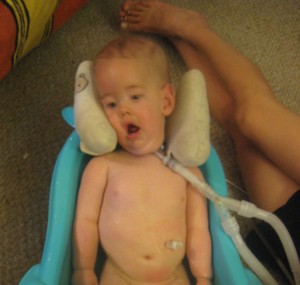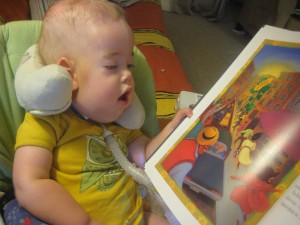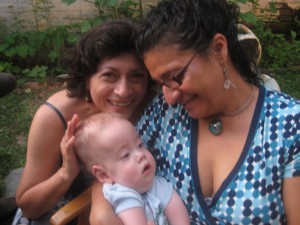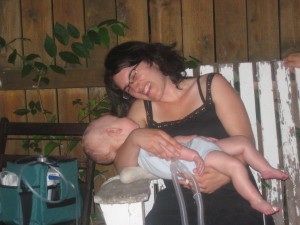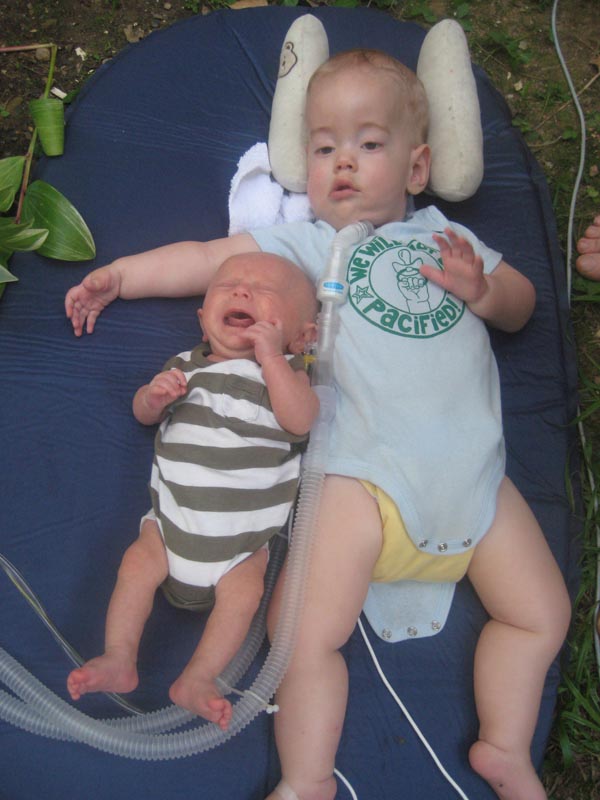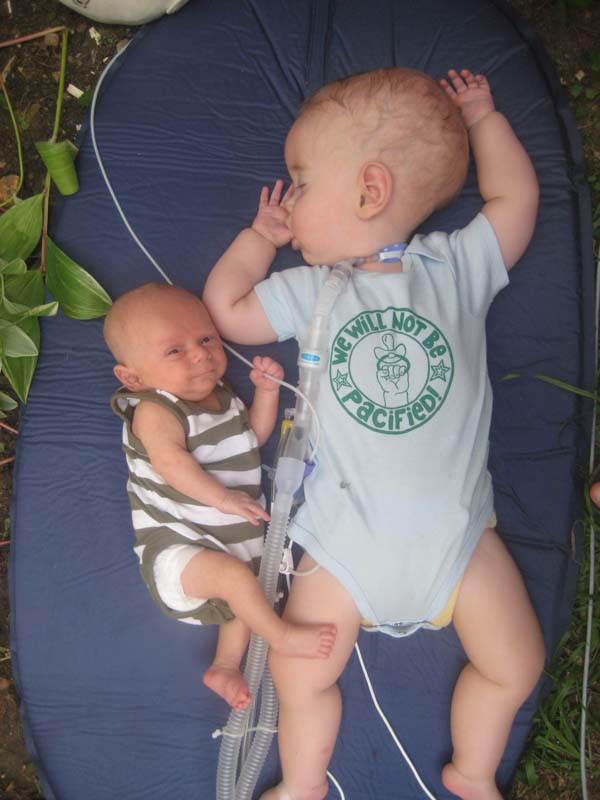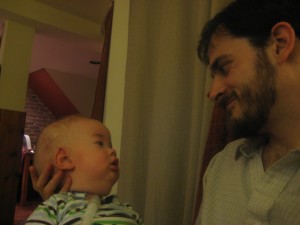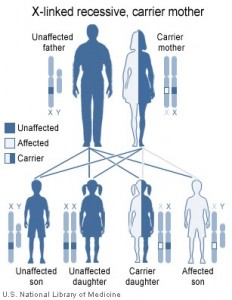Reflections from the U.S. Social Forum (June 30)
It’s true – I (Krista) was gone for four and a half days to attend the U.S. Social Forum last week. Although I worried that I wouldn’t survive being away from Lucas so long (or that god forbid I’d like being away), it turns out it wasn’t nearly as hard as I thought it would be. It certainly helped to be surrounded by wonderful people, constantly learning in workshops and reconnecting with old friends during the breaks. And it helped that Burke gave me detailed Lucas reports every time I called to check in. I went to the forum in part to reconnect with political activism and in part to connect with and learn from like-minded people about disability. I thought that meeting other people with disabilities* would help give me insight into Lucas’s experience.
The first workshop I attended was called “Beyond Access.” It was led by two people who are activists and teachers and who have disabilities (one of the facilitators even had a trach!). The 4-hour workshop was meant to push people who are already part of the disability community – people with disabilities and their allies – to think beyond some of the traditional frameworks and approaches to disability. The workshop facilitators showed images to get the group talking about what they called the charity model, the medical model, the administrative model, and the social/movement model of disability. In each of the first three frameworks, people without disabilities (parents, politicians, charity board members, doctors, social workers, etc) are in positions of power over people with disabilities. People with disabilities are seen as passive victims of their disability or disease, people who are sick and need fixing, people to be pitied, and people who need decisions made for them. It is a harsh critique for anyone who’s grown up in this culture, since we’ve been taught that charity, medicalization, and services are ways to help, not harm. The facilitators contrasted these models with a movement model, one in which people with disabilities are on the boards, in leadership and defining priorities for change.
We then went on to look at an expansive vision of a movement that works toward profound transformation of our society, institutions, and culture. Historically disability activists have worked to secure legal rights and access through legislation like the Americans with Disabilities Act (ADA), which have led to significant changes in society in the past 20 years. (A mother of a 26 year old with disabilities said to me “it’s a good time to be born with disabilities.”) However, people talked about their experiences with the limitations of legal rights. A few people talked about the challenges of bathrooms. As far as people in the room understood, the ADA has language saying public buildings need to have “reasonable access” for people with disabilities, but the legislation does not explicitly mention or cover care givers or assistants or spouses of other genders who need to go into the bathroom to assist. A workshop participant who uses a wheel chair talked about facing arrest in the Smithsonian museum when her husband assisted her in the bathroom.
The facilitators led us through another activity to highlight they ways classism, racism, homophobia, prisons, war, and ableism overlap and intersect: the fact that unemployment is incredibly high for people with disabilities, that people with disabilities are still often institutionalized against their will, that children of color with disabilities are often much more marginalized in the public school system than their white peers with parents who have more time, lawyers, and power to advocate for their children’s rights. In small groups, we envisioned a movement that fights against multiple injustices at once – that fights racism and ableism and strives to build a radically new culture where nobody would imagine calling the police when a man helps his wife in a wheel chair to the bathroom.
It is a radical vision, and I admit that sometimes I feel cynical when asked to envision a world that feels so far removed from where we are now. But it was different for me this time. I felt really inspired meeting so many different people working toward this vision: a group of young people from North Carolina who formed a coordinated pod of radical personal assistants for folks with disabilities, sharing a vision of empowerment; a man with cerebral palsy who is an advocate for independent living, peer support, and self-esteem for people with disabilities; a man from Michigan who survived a shooting 13 years ago who was in a coma, used a trach, ventilator, g-tube and wheel chair for years, who found strength and God in his ongoing rehabilitation; a mother whose children are deaf and who has taken to speaking loudly and with sign language everywhere she goes as she insists the world learn to sign; another mother of a son with disabilities who spent the whole social forum coordinating access for all; her artist son with Downs Syndrome who makes T-shirts that say “Labels are for Jars” and “I [heart] My Life.”
These complex conversations certainly didn’t give me any easy formulas for being a mother and ally to people with disabilities. But it was significant for me to get over my fear of exposing my own ignorance and prejudices and simply talk with people. And in the end I left feeling incredibly relieved having met such a warm, loving, inclusive community of people that can be role models to Lucas, Burke and me.
* About language: I’m learning too about naming for the community of people who have clear physical and cognitive differences from the mainstream, from those of us who identify as (temporarily) able-bodied. There is crippled, disabled, handicapped, physically challenged, differently abled, special needs, medically fragile… and more. Most people at the social forum chose “disabled” as a broad, inclusive identity.
